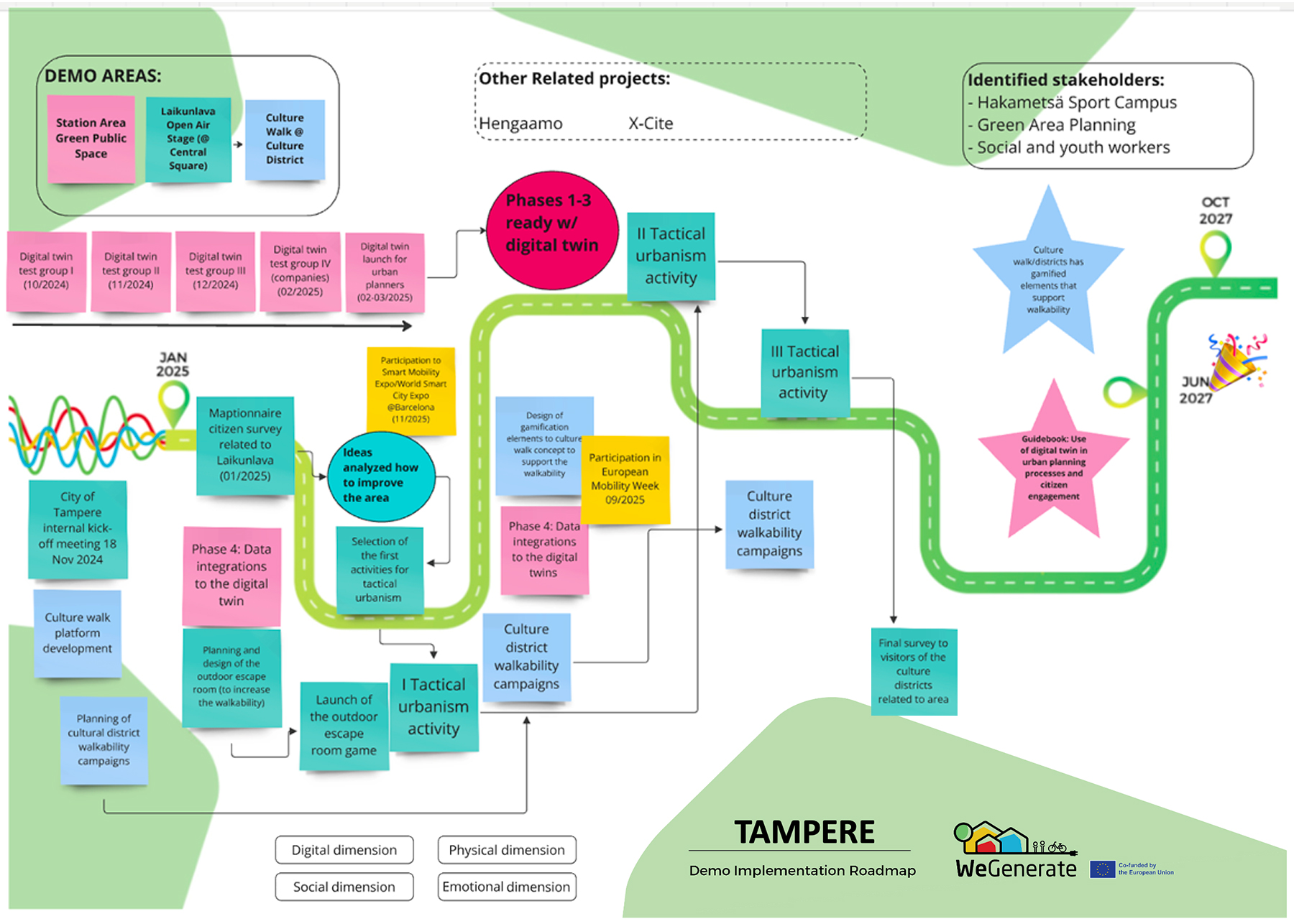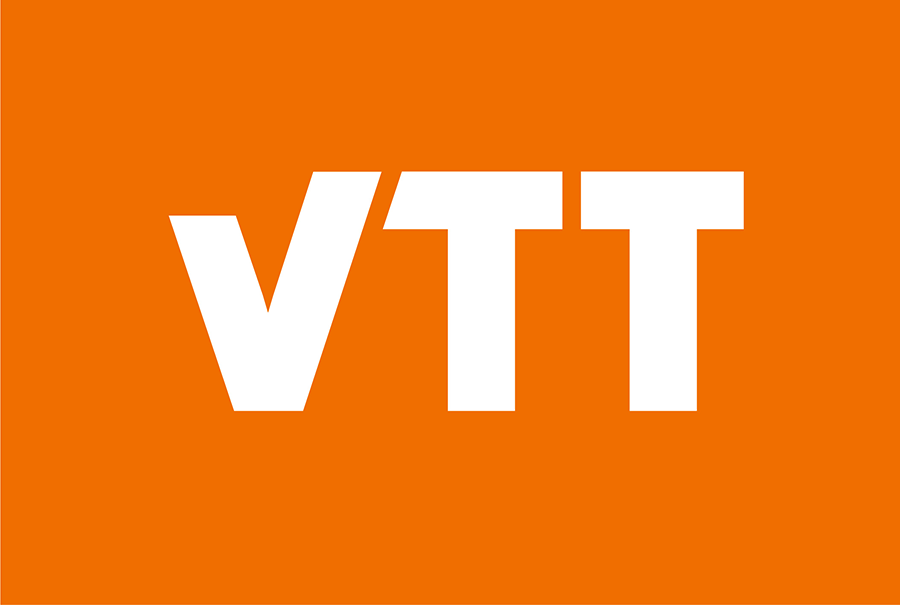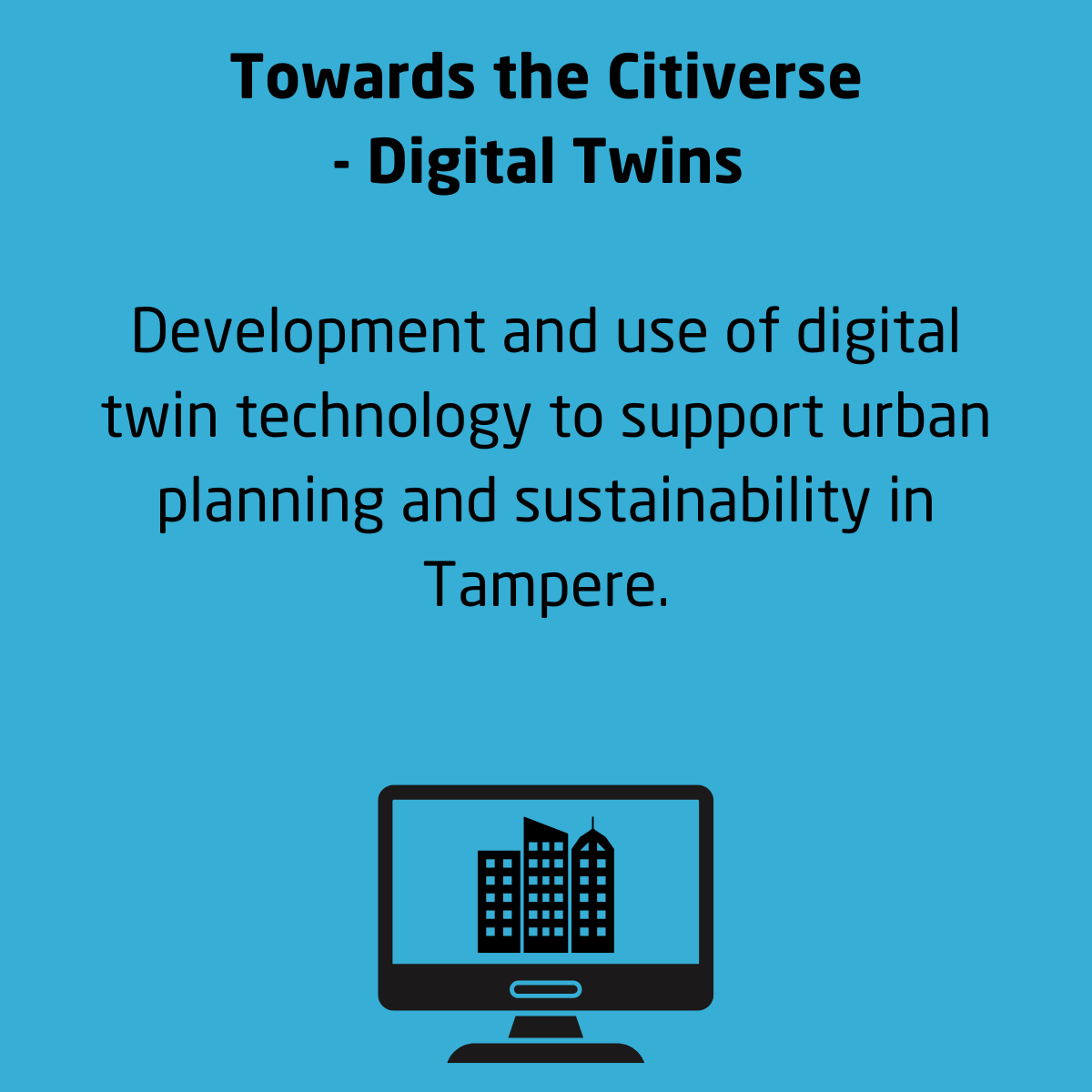
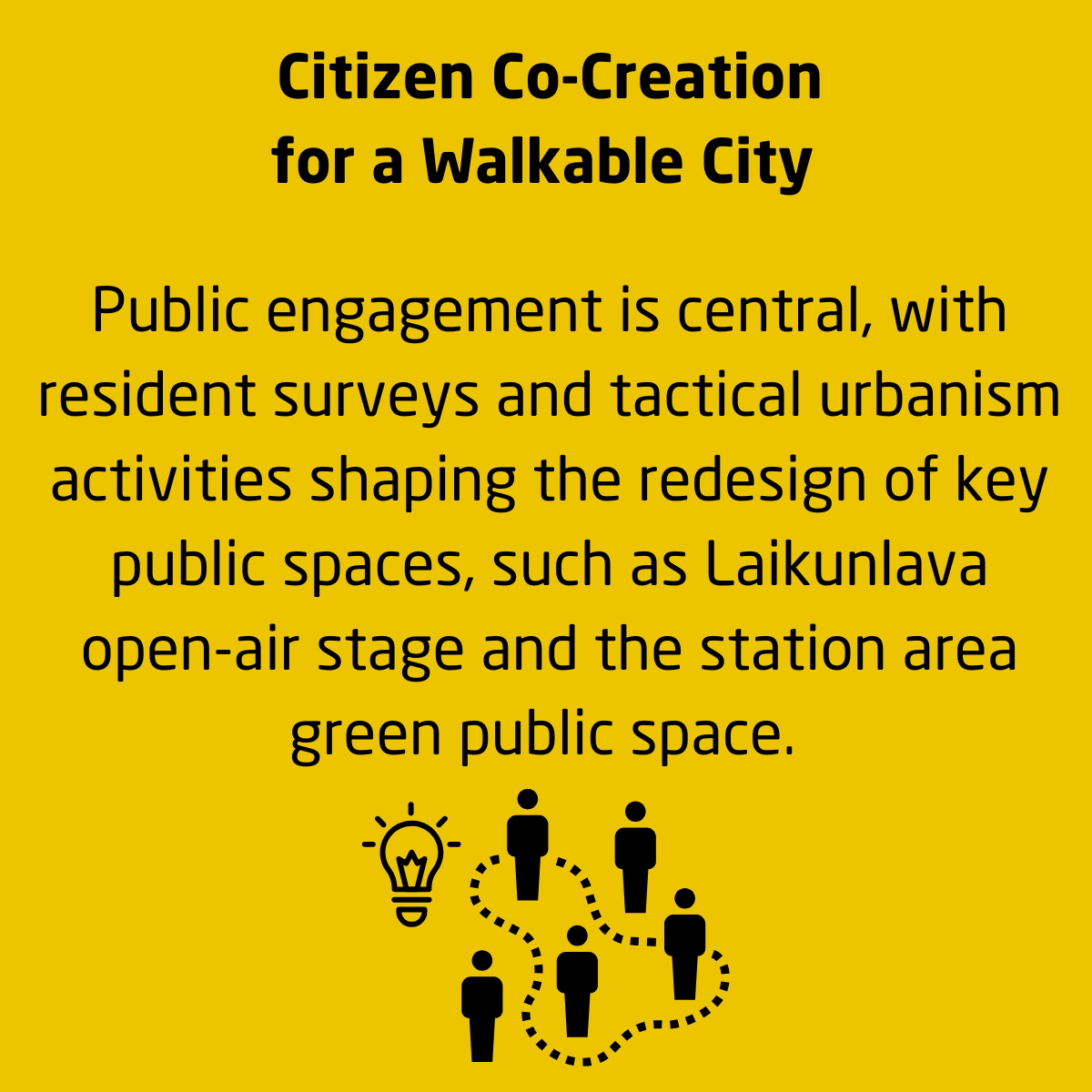
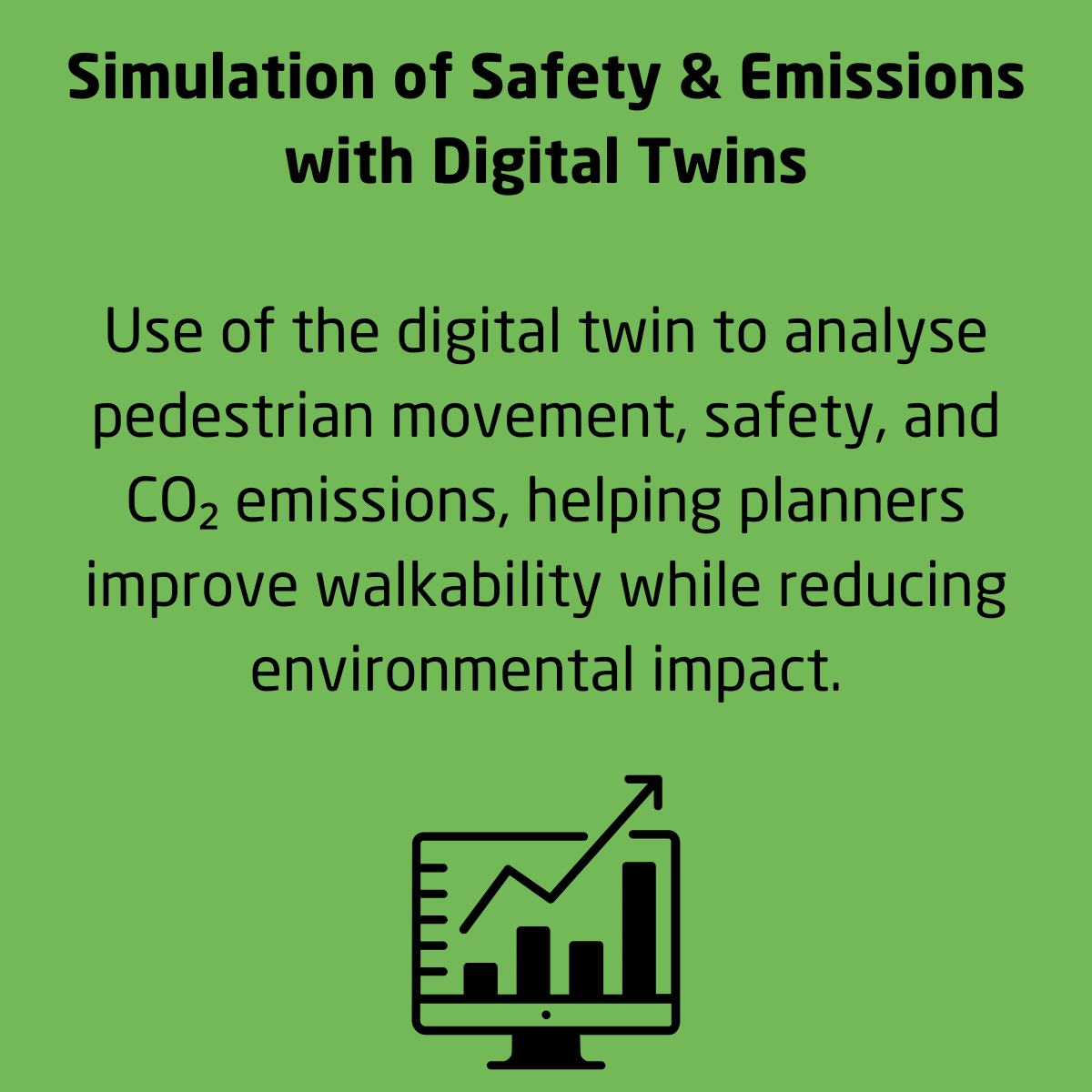
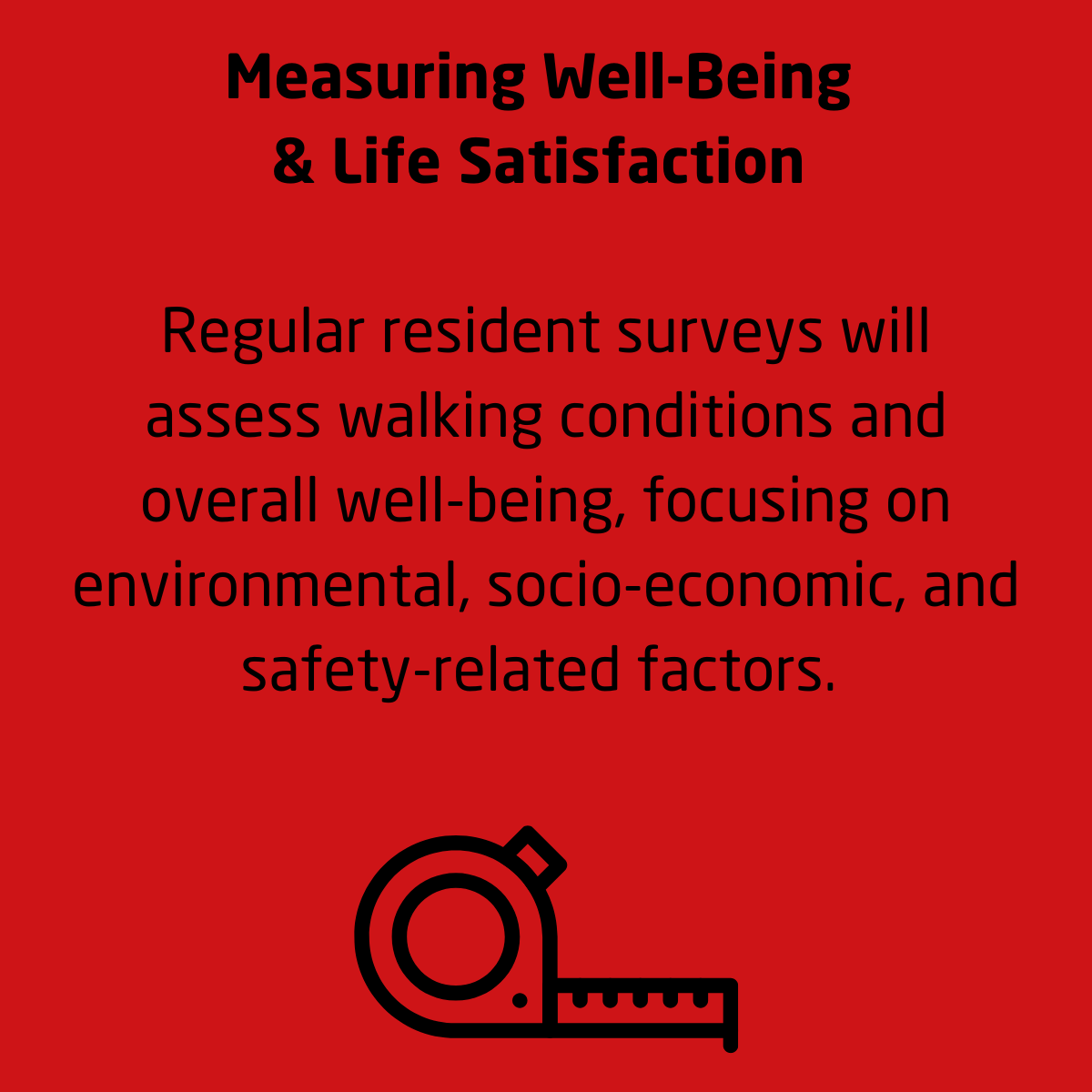
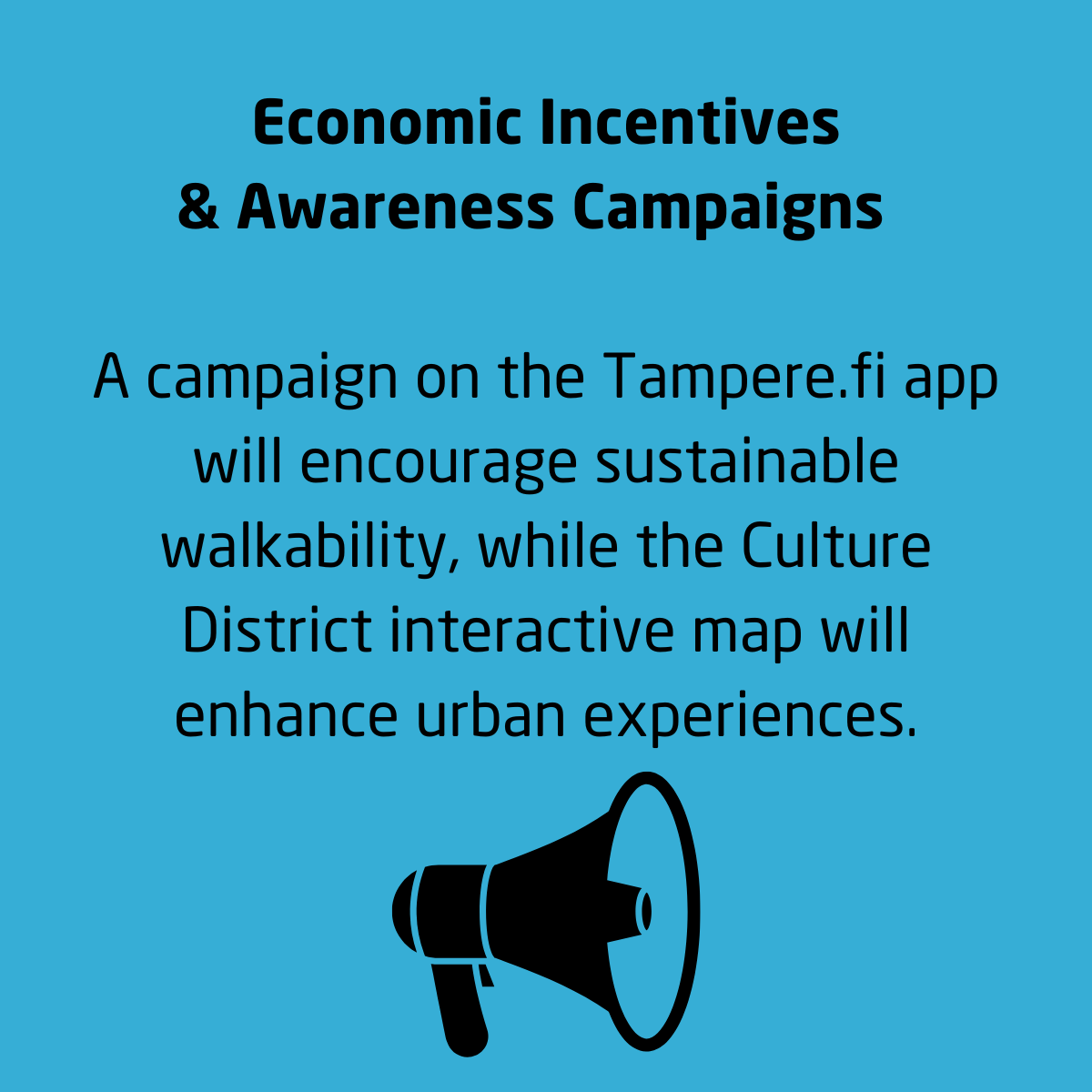





Human-Centric Walkable City
Tampere is the 3rd biggest city in Finland and the most populated inland city in the Nordics. As with many city centres across Europe, the Tampere city centre is facing the threat of decline. The Tampere Sense of Safety survey (2021) revealed that residents felt least safe in the city centre area and in general, they found the place unattractive for pedestrians. Shifts in consumer behavior, like the surge in online shopping, coupled with inflation and the energy crisis, are stalling the path to design attractive areas in the city centre. This Demo aims to revitalise the Tampere city centre to make it walking-friendly in order to bring back people and businesses while encouraging a healthy low-carbon lifestyle of citizens and reducing the city’s carbon footprint.
